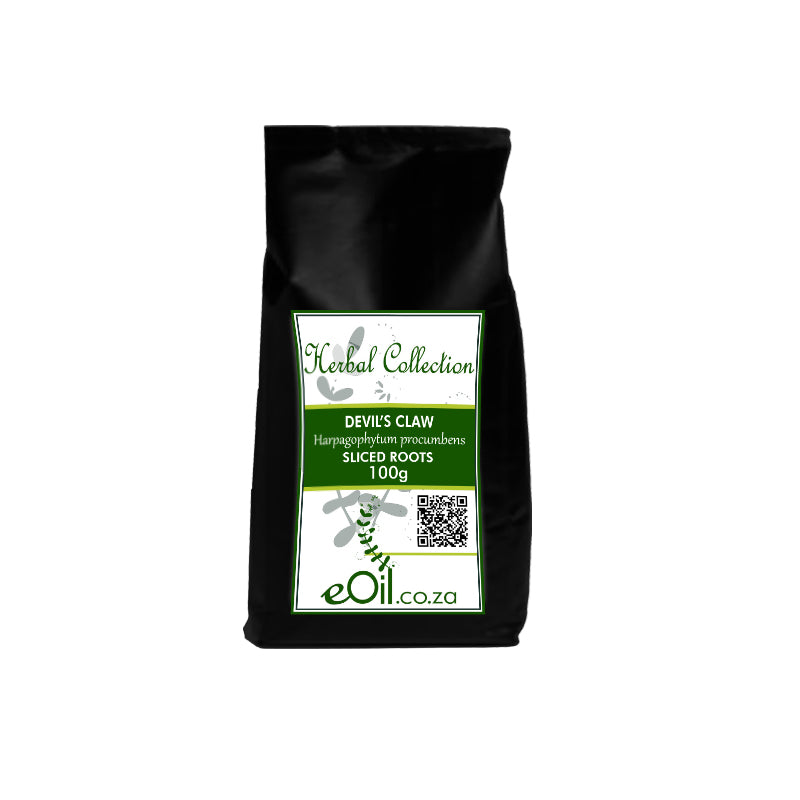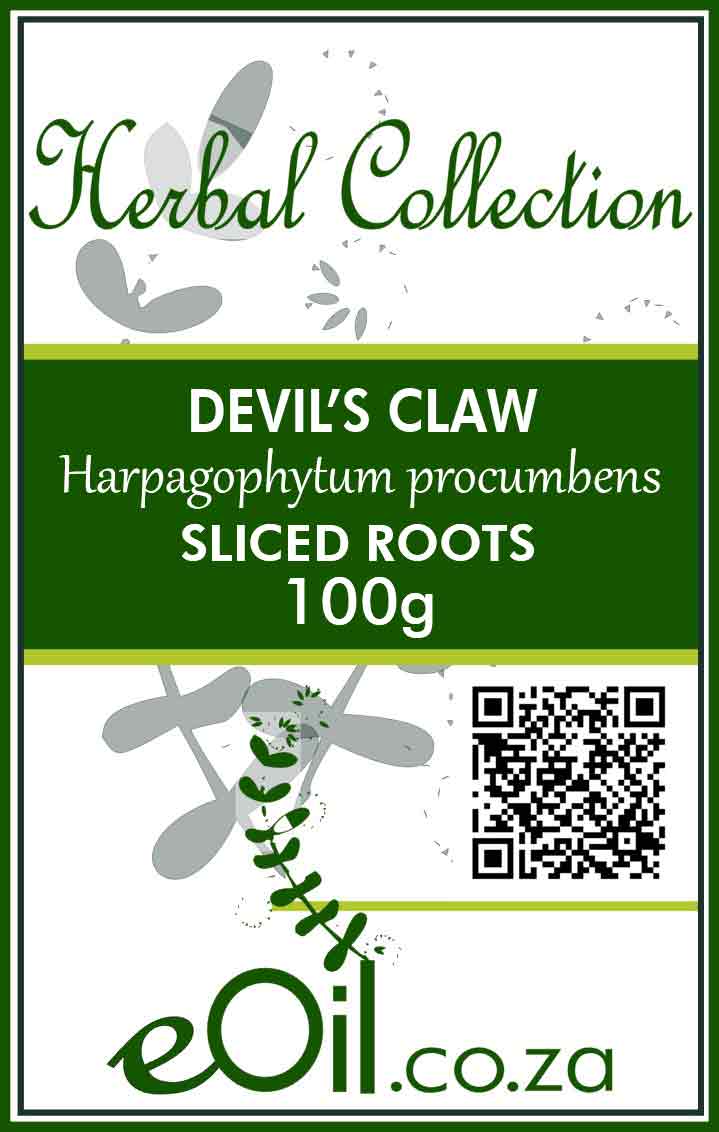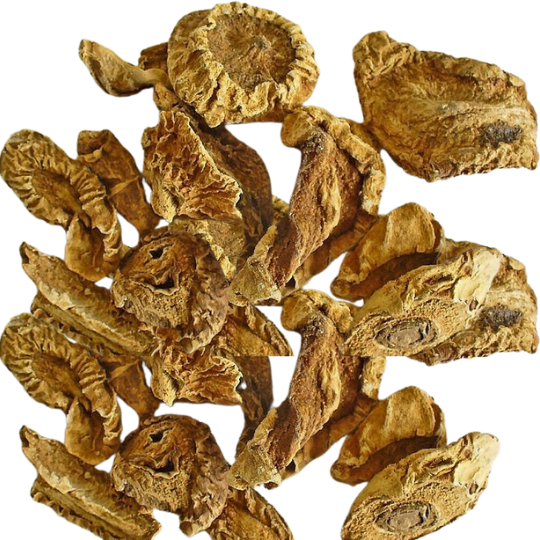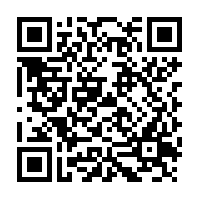Devil's Claw Sliced Cut - Herbal Collection
Devil's Claw Sliced Cut - Herbal Collection - 100 GR is backordered and will ship as soon as it is back in stock.
Description
Description
Devil's Claw Sliced Cut (Harpagophytum procumbens) consists of hand-cut, naturally dried slices of the root tuber.
Traditionally valued in herbal tea blends and wellness projects, these slices offer a mild, earthy flavor and are perfect for infusions or creative natural routines.
100% pure, additive-free, and ideal for holistic living
TRADITIONALLY USED FOR
Devil’s Claw Slice Cut (Harpagophytum procumbens) – Herbal Product Description
What is Devil’s Claw?
Devil’s Claw (Harpagophytum procumbens) is a traditional South African herbal remedy prized for its natural analgesic and anti-inflammatory properties.
Also known as Kalahari Devil’s Claw, Grapple Plant, or Wood Spider, it is native to southern Africa and is easily recognized by its claw-shaped fruit.
The sliced roots are used for their powerful wellness benefits.
Traditional & Modern Uses
- Joint and muscle pain relief: Eases symptoms of arthritis, backache, and muscle stiffness.
- Anti-inflammatory support: Assists with rheumatic pain, osteoarthritis, tendonitis, bursitis, and general inflammation.
- Aids digestion: Traditionally used to support appetite, reduce indigestion, and promote digestive comfort.
- Wellness tonic: Used as a tonic for general well-being, fever management, and for liver and kidney support.
- Topical application: Can be applied as a compress for sprains, wounds, or skin conditions.
How to Use Devil’s Claw Slice Cut
- Herbal Tea (Decoction):
Place 1–2 teaspoons (2–4g) of Devil’s Claw sliced root in 1 cup of water. Simmer for 10–15 minutes. Strain and drink up to 2–3 cups daily. Continue at least 4 weeks for noticeable relief from chronic pain1. - Other Forms:
Also available in tincture, powder, or capsule. Always follow manufacturer’s dosage or consult a natural health practitioner.
Basic Certificate of Analysis (COA) Information
- Product: Sliced, dried root of Harpagophytum procumbens
- Origin: Southern Africa
- Botanical Verification: Identified and authenticated by specialists; see local certification for batch-specific details
- Processing: Clean, sliced, air-dried root; food grade (suitable for teas and herbal preparations)
- Active Ingredients: Harpagoside (primary iridoid glycoside), harpagide, procumbine, amino acids, flavonoids, triterpenes
- Safety/Toxicity: Tested to ensure product purity and authenticity (refer to batch COA for contaminants and bioactive compound levels)
- Free from: Artificial preservatives, additives, or colorants
Precautions & Warnings:
- Not for use by pregnant or breastfeeding women
- Not recommended for those with gastric or duodenal ulcers or gallstones
- May interact with blood thinners, heart or diabetes medication, and NSAIDs—consult a doctor before use
- Possible mild side effects include digestive upset or diarrhea; excessive use may worsen ulcers or trigger gallbladder problems
Summary Table
| Feature | Details |
|---|---|
| Botanical Name | Harpagophytum procumbens |
| Common Names | Devil’s Claw, Grapple Plant, Kalahari Devil’s Claw |
| Part Used | Sliced dried root |
| Key Actions | Anti-inflammatory, analgesic, joint & muscle support |
| Typical Uses | Herbal tea, topical compress, capsule, powder |
| Main Ingredients | Harpagoside, harpagide, flavonoids, triterpenes, procumbine |
| COA Standards | Authenticated botanicals, tested for purity and active ingredients |
| Warnings | Not for pregnancy, ulcers, gallstones, or chronic overuse |
| Source | eOil.co.za (SA) |
This product is not intended as a substitute for professional medical care. Always consult a healthcare provider for chronic or severe conditions.
INFORMATION
Source : http://www.wikiphyto.org/wiki/Harpagophyton
Reference on http://www.wikiphyto.org
Translation in English by Google Translate (go to the page of the source linked | on Chrome cellphones go on the 3 dots on the top right and select translate in your preferred language | on laptop right click your mouse and select option translate when hoovering on the page
plant name
Harpagophyton, Windhoek Root , Devil's Claw
International Latin denomination
Harpagophytum procumbens DC. (South Africa)
Harpagophytum zeyheri Decne. = Harpagophytum zeyheri Decne. subsp. sublobatum (Engl.) Ihlenf. & HEKHartmann (Angola, Namibia, Zambia, Botswana, Zimbabwe) [6]
botanical family
Pedaliaceae
Description and habitat
- Perennial plant with creeping stems up to 1.5 m long, clinging to the ground, woody fruits about 15 cm covered with sharp curved prominences
- The secondary roots are sometimes huge bulbous tubers, 3 to 10 cm in diameter, which can weigh up to 1.5 kg
- South of the African continent, on soils rich in iron oxide in the semi-desert savannahs of Namibia, Botswana, Kalahari and South Africa (province of Windhoek)
- Western demand is such (more than 1000 tons per year) that the resource is threatened
History and tradition
- Its nickname "Devil's Claw" comes from its fruits bearing curved hooks which seem to come out of the ground to trap the legs of antelopes, arpagos means grappling hook in Greek
- South African folk medicine uses it in digestive disorders, in fever, in labor pains
- It was a German farmer, Menhert, who at the beginning of the century, observed in South Africa on a war wounded the beneficial effects of a treatment provided by a healer who did not want to reveal his secret. It was thanks to his hunting dog that he discovered the leaves that had been buried and that he identified the harpagophyton. Native Bushmans and Bantu used the roots orally to treat indigestion, fever, labor pains, dyspepsia, urinary tract infections, sprains and trauma [1]
- Introduced to Europe by OH Volk in 1953
- Other subspecies: Harpagophytum transvaalense
Parts used
- Tuberous secondary lateral root, cut and dried
Dosage forms available
- Dry extract (3 to 5:1) in general
- Micronized secondary root powder
Usual dosages
- Traditional galenic form: decoction-maceration:
- Pour 300 ml of boiling water over 4.5 g of finely chopped drug, leave to stand at room temperature for 8 hours, filter, 3 doses during the day (2.5 to 5 g)
- Nebulisat ( hydro-alcoholic dry extract ) 1.5 to 3 grams per day
- According to the EMEA [7] :
- Dried root: 4.5 g in 500 ml of water, in three doses
- Aqueous dry extract 5-10: 1 => 600 to 800 mg per day
- Hydro-alcoholic dry extract 2.6-4: 1 => 460 mg up to 1.6 g
Composition
Main components of the plant
- Iridoids (0.1 to 2%): harpagoside , procumboside , harpagid and its cinnamic ester
- Water extractable polysaccharides : stachyose, raffinose, sucrose, glucose (up to 70% of dry weight)
- Flavonoids and flavonols , acteoside , isoacteoside , harpagoquinone
- N-alkanes , sterols , lipids, waxes
- Harpagophytum procumbens contains more harpagoside
- Harpagophytum zeyheri contains 8-Op-coumaroylharpagide , which helps distinguish them
- Both species possess the same anti-inflammatory and analgesic activities [2] , [3]
Main components of buds or young shoots
- Not applicable
Main components of essential oil
- Not applicable
Properties
Plant properties
- Analgesic, anti-phlogistic, (aqueous extract by harpagoside )
- Anti-inflammatory activity by inhibition of cyclooxygenase-2 (COX-2) [4] , [5] , [6] , inhibits NO degradation and NF-kappaB activation [7] , with inhibition of TNF- alpha and prevention of the activation of the AP-1 complex (activating protein 1) [8] , inhibition of the biosynthesis of cysteinyl-leukotrienes (LTC4, LTD4, LTE4) and TXB2 in human serum after pre-incubation with harpagoside or extracts of Harpagophyton [9] , inhibition of the production of IL-1beta, IL-6, and TNF-alpha [10]
- Harpagide and harpagoside are not the only culprits in efficacy, as a harpagophytum extract dose-dependently inhibits lipopolysaccharide-induced TNF-alpha synthesis in human monocytes without their participation [11].
- Its action has been compared to that of phenylbutazone [12] , [13] and indomethacin, Vioxx® [14] or that of diacerrhein [15] , [16].
- Analgesic [17] and hypoglycaemic [18]
- Efficacy is manifested without side effects [19] , [20]
- The extraction ratio ( ratio of the nebulized dry extract of this plant being approximately 3:1 compared to the dry plant, for an effectiveness equivalent to that of 4.5 grams of plant drug, one must therefore administer daily a dose of 1.5 grams of nebulisate per day, i.e. 6 capsules of 250 mg. It is thus obvious that the powder put into capsules will be much less active (equivalent to 18 capsules of 250 mg per day) [21] , for the aqueous extract, the extraction ratio is about 2:1 (Chrubasik)
- Commercial products vary widely in composition, and the mere mention of a minimum harpagoside content does not guarantee the quality of a product [22].
Bud properties
Properties of essential oil
Directions
Indications of the whole plant (phytotherapy)
- Rheumatic pains [23] , [24] , [25] , [26] , congestive attacks of osteoarthritis, especially osteoarthritis of the large joints (hips and knees) [27] at a dose of 2400 mg of extract, with very few side effects [28] , [29]
- Back pain [30] , [31] , [32] , [33]
- Arthritis, osteoarthritis [34]
- Potential candidate for the treatment of postmenopausal osteoporosis by stimulating osteoblast differentiation and inhibiting osteoclast resorption ( harpagoside ) [35]
- Different literature reviews exist [36] , [37] , [38] , [39]
Indications of the bud (gemmotherapy)
Specific indications of essential oil (aromatherapy)
Known or suspected mode of action
- Inhibition of the biosynthesis of cysteinyl-leukotrienes and the degradation of thromboxane which play an important role in inflammatory pathologies
- The activity would result from a synergy between harpagoside , harpagide , 8-coumaroylharpagide , verbascoside [40]
- Harpagoside indiscriminately inhibits the activity of the cyclo-oxygenases COX-1 and COX-2 and strongly reduces the production of NO [41]
- Pure iridoids : harpagide , harpagoside and 8-Op-coumaroylharpagide are transformed into aucubinin B , a monoterpene alkaloid , chemically, enzymatically and microbiologically under the action of intestinal bacteria [42]
- In addition, the iridoids would be chemically transformed into other alkaloids called Béatrine 1 and Béatrine 2 [43].
Usual formulations
Regulations
- French Pharmacopoeia list A (secondary tuberous root)
- Activity recognized by the German Commission E
Possible side effects and precautions for use
- Gastrointestinal disorders (rare): diarrhoea, nausea, vomiting, abdominal pain
- Moderate risk of increased gastric acidity (caution when combined with H2 receptor antagonists, proton pump inhibitors, and antacids)
- Increased risk of bleeding when taken with drugs such as NSAIDs or blood thinners (as a COX-2 inhibitor)
- Effects on cytochrome P450 isoenzymes, harpagophytum is an inhibitor of the 3A4, 2C8, 2C9 and 2C19 subunits of CYP450 [44]
- Caution when combined with hypoglycemic drugs
- Headaches, dizziness
- Possible skin allergies (exceptional) [8]
- In combination with certain antihypertensives, increased antihypertensive effect and induction of episodes of hypotension [45]
- Moderate risk of modification of the rhythm and force of cardiac contraction, caution in patients taking antiarrhythmics or digoxin
- Caution in case of renal insufficiency [46]
- Interaction with P-glycoprotein [47]
Bibliographic references
- Aller↑ Mncwangi N, Chen W, Vermaak I, Viljoen AM, Gericke N. Devil's Claw-a review of the ethnobotany, phytochemistry and biological activity of Harpagophytum procumbens. J Ethnopharmacol. 2012 Oct 11;143(3):755-71. doi: 10.1016/j.jep.2012.08.013. PMID 22940241
- Aller↑ Baghdikian B, Ollivier E. The iridoids of Harpagophytum procumbens and zeyheri and their transformation by chemical, enzymatic and microbiological ways = The iridoids of Harpagophytum procumbens and zeyheri and their transformation by chemical, enzymatic and microbiological ways. Doctoral thesis University of Aix-Marseille 3, 1998, N° 98 AIX3 0021 [1]
- Aller↑ Baghdikian B, Lanhers MC, Fleurentin J, Ollivier E, Maillard C, Balansard G, Mortier F. An analytical study, anti-inflammatory and analgesic effects of Harpagophytum procumbens and Harpagophytum zeyheri. Planta-Med. 1997 Apr; 63(2): 171-6. PMID 9140234
- Aller↑ Joydeb Kumar Kundu, Kensese S. Mossanda, Hye-Kyung Na, Young-Joon Surh. Inhibitory effects of the extracts of Sutherlandia frutescens (L.) R. Br. and Harpagophytum procumbens DC. on phorbol ester-induced COX-2 expression in mouse skin: AP-1 and CREB as potential upstream targets. Cancer Letters, 2005, Volume 218, Issue 1, Pages 21-31
- Aller↑ Dieter Loew, Jörg Möllerfeld, Andreas Schrödter, Susanne Puttkammer, Marietta Kaszkin. Investigations on the pharmacokinetic properties of Harpagophytum extracts and their effects on eicosanoid biosynthesis in vitro and ex vivo. Clinical Pharmacology & Therapeutics (2001) 69, 356–364 [2]
- Aller↑ Hyun-Chol Cho, Yun-Kyung Song, Hyung-Ho Lim. Harpagophytum Procumbens Suppresses Lipopolysaccharide Induced Expressions of Cyclooxygenase-2 and Inducible Nitric Oxide Synthase in Mouse BV2 Microglial Cells. Korean Journal of Oriental Medicine. 2005. Vol. 26. No. 4. 152-161. Full Text
- Aller↑ Huang TH, Tran VH, Duke RK, Tan S, Chrubasik S, Roufogalis BD, Duke CC. Harpagoside suppresses lipopolysaccharide-induced iNOS and COX-2 expression through inhibition of NF-kappa B activation. J Ethnopharmacol. 2006 Mar 8;104(1-2):149-55. PMID 16203115
- Aller↑ Fiebich BL, Muñoz E, Rose T, Weiss G, McGregor GP. Molecular Targets of the Antiinflammatory Harpagophytum procumbens (Devil's claw): Inhibition of TNFα and COX-2 Gene Expression by Preventing Activation of AP-1. Phytother Res. 2011 Nov 10. PMID 22072539
- Aller↑ Karl-Heinz Stumpf, Hermann Jaggy, Rainer Oschmann, Egon Koch, Thomas Simmet. Harpagoside-enriched extract from harpagophytum procumbens and processes for producing same. US patent 6280737 B1 [3]
- Aller↑ Inaba K, Murata K, Naruto S, Matsuda H. Inhibitory effects of devil's claw (secondary root of Harpagophytum procumbens) extract and harpagoside on cytokine production in mouse macrophages. J Nat Med. 2010 Apr;64(2):219-22. PMID 20177800
- Aller↑ Fiebich, BL, Heinrich, M., Hiller, KO, & Kammerer, N. (2001). Inhibition of TNF-alpha synthesis in LPS-stimulated primary human monocytes by Harpagophytum extract SteiHap 69. Phytomedicine: international journal of phytotherapy and phytopharmacology, 8(1), 28–30. https://doi.org/10.1078/0944-7113-00002 PMID 11292236
- Aller↑ McLeod DW, Revell P, Robinson BV Investigations of Harpagophytum procumbens (Devil's Claw) in the treatment of experimental inflammation and arthritis in the rat [proceedings]. British journal of pharmacology, 1979, 66(1), p 140. full text
- Aller↑ Faivre C, Ghedira K, Goetz P, Lejeune R. Harpagophytum procumbens (Pedaliaceae). Phytotherapy, August 2007, Volume 5, Issue 3, pp 150–153. DOI: 10.1007/s10298-007-0246-2
- Aller↑ Chrubasik S, Model A, Black A, Pollak S. A randomized double-blind pilot study comparing Doloteffin and Vioxx in the treatment of low back pain. Rheumatology (Oxford). 2003 Jan;42(1):141-8. PMID 12509627 full text
- Aller↑ Chantre P, Cappelaere A, Leblan D, Guedon D, Vandermander J, Fournie B. Efficacy and tolerance of Harpagophytum procumbens versus diacerhein in treatment of osteoarthritis. Phytomedicine. 2000 Jun;7(3):177-83. PMID 11185727
- Aller↑ Leblan D, Chantre P, Fournié B. Harpagophytum procumbens in the treatment of knee and hip osteoarthritis. Four-month results of a prospective, multicenter, double-blind trial versus diacerein. Joint Bone Spine. 2000;67(5):462-7. PMID 11143915
- Aller↑ Andersen ML, Santos EH, Seabra Mde L, da Silva AA, Tufik S. Evaluation of acute and chronic treatments with Harpagophytum procumbens on Freund's adjuvant-induced arthritis in rats. J Ethnopharmacol. 2004 Apr;91(2-3):325-30. PMID 15120457
- Aller↑ Mahomed IM, Ojewole JA. Analgesic, antiinflammatory and antidiabetic properties of Harpagophytum procumbens DC (Pedaliaceae) secondary root aqueous extract. Phytother Res. 2004 Dec;18(12):982-9. PMID 15742343
- Aller↑ Chrubasik S, Chrubasik C, Künzel O, Black A. Patient-perceived benefit during one year of treatment with Doloteffin. Phytomedicine. 2007 Jun;14(6):371-6. PMID 17521896
- Aller↑ Vlachojannis J, Roufogalis BD, Chrubasik S. Systematic review on the safety of Harpagophytum preparations for osteoarthritic and low back pain. Phytother Res. 2008 Feb;22(2):149-52. doi: 10.1002/ptr.2314. PMID 18236448
- Aller↑ Jean-Michel Morel. Practical treatise on phytotherapy. Ed. Grancher, 2008
- Aller↑ Ouitas NA, Heard C. Estimation of the relative antiinflammatory efficacies of six commercial preparations of Harpagophytum procumbens (Devil's Claw). Phytother Res. 2010 Mar;24(3):333-8. doi: 10.1002/ptr.2930. PMID 19610038
- Aller↑ Warnock M, McBean D, Suter A, Tan J, Whittaker P. Effectiveness and safety of Devil's Claw tablets in patients with general rheumatic disorders. Phytother Res. 2007 Dec;21(12):1228-33. PMID 17886223
- Aller↑ Chrubasik S, Pollak S. Pain management with herbal antirheumatic drugs. Vienna Med Wochenschr. 2002;152(7-8):198-203. PMID 12017748
- Aller↑ Grant L, McBean DE, Fyfe L, Warnock AM. A review of the biological and potential therapeutic actions of Harpagophytum procumbens. Phytotherapy Research, 2007, vol. 21, No. 3, p. 199-209.
- Aller↑ Dragos, D., Gilca, M., Gaman, L., Vlad, A., Iosif, L., Stoian, I., & Lupescu, O. (2017). Phytomedicine in Joint Disorders. Nutrients, 9(1), 70. doi:10.3390/nu9010070
- Aller↑ Wegener T, Lüpke NP. Treatment of patients with arthrosis of hip or knee with an aqueous extract of devil's claw (Harpagophytum procumbens DC.). Phytother Res. 2003 Dec;17(10):1165-72. PMID 14669250 Full Text
- Aller↑ Chrubasik S, Thanner J, Künzel O, et al. Comparison of outcome measures during treatment with the proprietary Harpagophytum extract Doloteffin in patients with pain in the lower back, knee or hip. Phytomedicine 2002;9:181-194. PMID 12046857
- Aller↑ Wegener T. Degenerative diseases of the musculoskeletal system--overview of current clinical studies of Devil's Claw (Harpagophyti radix). Vienna Med Wochenschr. 2002;152(15-16):389-92. PMID 12244884
- Aller↑ Gagnier J, Chrubasik S, Manheimer E. Harpgophytum procumbens for osteoarthritis and low back pain: A systematic review BMC Complement Altern Med. 2004; 4:13 . PMID 15369596 full text
- Aller↑ Laudahn D, Walper A. Efficacy and tolerance of Harpagophytum extract LI 174 in patients with chronic non-radicular back pain. Phytother Res. 2001 Nov;15(7):621-4. PMID 11746846
- Aller↑ Gagnier JJ, van Tulder MW, Berman B, Bombardier C. Herbal medicine for low back pain: a Cochrane review. Spine (Phila Pa 1976). 2007 Jan 1;32(1):82-92. Erratum in Spine. 2007 Aug 1;32(17):1931. PMID 17202897
- Aller↑ Chrubasik S, Junck H, Breitschwerdt H, Conradt C, Zappe H. Effectiveness of Harpagophytum extract WS 1531 in the treatment of exacerbation of low back pain: a randomized, placebo-controlled, double-blind study. Eur J Anaesthesiol. 1999 Feb;16(2):118-29. PMID 10101629
- Aller↑ Gerard McGregor, Bernd Fiebich, Andrea Wartenberg, Sarah Brien, George Lewith, Tankred Wegener. Devil's Claw (Harpagophytum procumbens): An Anti-Inflammatory Herb with Therapeutic Potential. Phytochemistry Reviews, January 2005, Volume 4, Issue 1, pp 47–53. DOI: 10.1007/s11101-004-2374-8
- Aller↑ Chung HJ, Kim WK, Oh J, Kim MR, Shin JS, Lee J, Ha IH, Lee SK. Anti-Osteoporotic Activity of Harpagoside by Upregulation of the BMP2 and Wnt Signaling Pathways in Osteoblasts and Suppression of Differentiation in Osteoclasts. J Nat Prod. 2017 Feb 24;80(2):434-442. doi: 10.1021/acs.jnatprod.6b00964. PMID 28106392
- Aller↑ Brendler T, Gruenwald J, Ulbricht C, Basch E; Natural Standard Research Collaboration. Devil's Claw (Harpagophytum procumbens DC): an evidence-based systematic review by the Natural Standard Research Collaboration. J Herb Pharmacother. 2006;6(1):89-126. PMID 17135164
- Aller↑ Sanders M, Grundmann O. The use of glucosamine, devil's claw (Harpagophytum procumbens), and acupuncture as complementary and alternative treatments for osteoarthritis. Altern Med Rev. 2011 Sep;16(3):228-38. PMID 21951024
- Aller↑ Brien S, Lewith GT, McGregor G. Devil's Claw (Harpagophytum procumbens) as a treatment for osteoarthritis: a review of efficacy and safety. J Altern Complement Med. 2006 Dec;12(10):981-93. PMID 17212570
- Aller↑ Chrubasik JE, Roufogalis BD, Chrubasik S. Evidence of effectiveness of herbal antiinflammatory drugs in the treatment of painful osteoarthritis and chronic low back pain. Phytother Res. 2007 Jul;21(7):675-83. Review. PMID 17444576
- Aller↑ Abdelouahab N, Heard C. Effect of the major glycosides of Harpagophytum procumbens (Devil's Claw) on epidermal cyclooxygenase-2 (COX-2) in vitro. J Nat Prod. 2008 May;71(5):746-9. doi: 10.1021/np070204u. PMID 18412394
- Aller↑ Anauate MC, Torres LM, de Mello SB. Effect of isolated fractions of Harpagophytum procumbens DC (devil's claw) on COX-1, COX-2 activity and nitric oxide production on whole-blood assay. Phytother Res. 2010 Sep;24(9):1365-9. doi: 10.1002/ptr.3124. PMID 20812280
- Aller↑ Baghdikian B, Guiraud-Dauriac H, Ollivier E, N'Guyen A, Dumenil G, Balansard G. Formation of nitrogen-containing metabolites from the main iridoids of Harpagophytum procumbens and H. zeyheri by human intestinal bacteria. PlantaMed. 1999 Mar;65(2):164-6. PMID 10193209
- Aller↑ Baghdikian B, Ollivier E, Faure R, Debrauwer L, Rathelot P, Balansard G. Two new pyridine monoterpene alkaloids by chemical conversion of a commercial extract of harpagophytum procumbens. J Nat Prod. 1999 Feb;62(2):211-3. PMID 10075743
- Aller↑ Navarette Sandra, Saussays Charline. Interactions between plants and drugs. Pharmaceutical sciences. 2011. <dumas-00641779> [4]
- Aller↑ Natural health products, to better advise patients. Reference document of the College of Physicians and the Order of Pharmacists of Quebec. Full text: [5]
- Aller↑ Jurado Camille, Nouaille Yves. (2013). Medical advice based on Harpagophytum: risk of worsening renal failure. Pharmaceutical News. 52. 50-51. 10.1016/j.actpha.2013.03.022.
- Aller↑ Romiti N, Tramonti G, Corti A, Chieli E. Effects of Devil's Claw (Harpagophytum procumbens) on the multidrug transporter ABCB1/P-glycoprotein. Phytomedicine. 2009 Dec;16(12):1095-100. doi: 10.1016/j.phymed.2009.05.001. PMID 19577448
- Wichtl Max, Anton Robert. Therapeutic plants: Tradition, officinal practice, science and therapy. Ed. Tec & Doc. Cachan. 1999. p. 248
- Occhiuto F, Circosta C, Ragusa S, Ficarra P, Costa De Pasquale R. A drug used in traditional medicine: Harpagophytum procumbens DC. IV. Effects on some isolated muscle preparations. Ethnopharmacol. 1985May;13(2):201-8. PMID 4021517
CAUTION
Store in a cool, dry place, away from light. Keep tightly closed, away from the reach of Children and pets.
Do not exceed the daily dose.
This product is not intended to prevent or cure any form of illness or disease.
If you are pregnant or nursing ; If you have a medical condition or are in the course of medical treatment ; If you are programmed for theater/operation in the near future, please consult your healthcare practitioner before using this product.
This product cannot replace a varied and balanced diet and a healthy lifestyle.
This product has not been evaluated by the SAHPRA for its quality, safety or intended use.
For More Information please check our General Safety Herbal products Page

Devil's Claw Sliced Cut - Herbal Collection - 100 GR is backordered and will ship as soon as it is back in stock.






